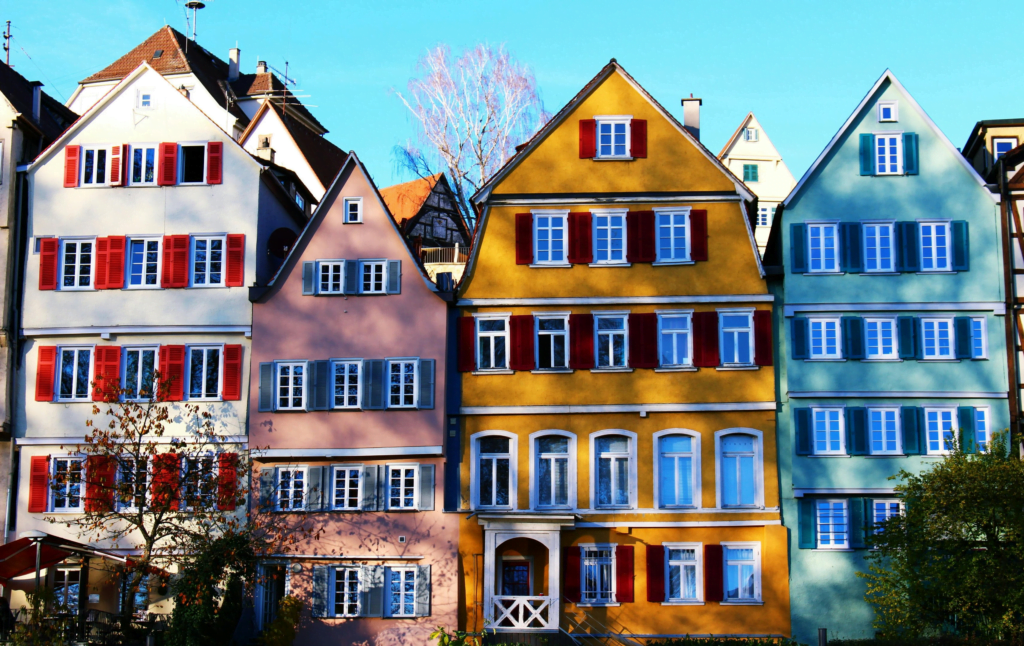
Germany is a country that boasts an abundance of natural beauty, diverse landscapes, and well-developed infrastructure, making it a paradise for outdoor enthusiasts. Whether you’re an avid hiker looking to scale the rolling hills and majestic mountains or a passionate cyclist seeking to explore scenic trails, Germany offers a plethora of opportunities for adventure. In this article, we’ll dive into why Germany is one of the best destinations for outdoor activities such as hiking and biking. We’ll explore its geographical diversity, notable regions, the best trails, and practical information for travelers to help plan an enriching outdoor experience.
1. The Diverse Geographical Landscape of Germany
One of the main reasons Germany is ideal for hiking and biking is its diverse geographical landscape. From rugged mountains to serene valleys and vast forests to picturesque riversides, Germany’s topography caters to all types of outdoor activities.
- The Bavarian Alps: The southern region of Germany is dominated by the Bavarian Alps, a mountain range known for its challenging trails and breathtaking views. The area offers alpine hiking routes, spectacular peaks, and scenic biking paths for adventure seekers.
- The Black Forest (Schwarzwald): Located in southwestern Germany, the Black Forest is famous for its dense woodlands, rolling hills, and scenic routes. It’s a hotspot for hikers and cyclists looking for long-distance trails amidst natural beauty.
- The Rhine Valley: The enchanting Rhine Valley, with its picturesque riverbanks, vineyards, and historic castles, provides some of the most beautiful cycling and hiking routes in the country.
- The Harz Mountains: The Harz region in central Germany offers both challenging mountain trails and accessible routes for leisurely hiking and biking. The landscape includes dramatic cliffs, deep gorges, and scenic vistas.
- The Baltic Sea and North Sea Coasts: For those who enjoy coastal views, the northern coastline of Germany is perfect for cycling along sandy beaches and taking in the serene beauty of the sea.
2. Hiking in Germany: Trails for Every Level
Germany is renowned for its extensive network of hiking trails, catering to all skill levels, from beginners to experienced hikers. Whether you’re looking for short, family-friendly routes or multi-day trekking adventures, Germany has it all.
a) Top Hiking Trails in Germany
- Zugspitze (Bavarian Alps): As Germany’s highest peak (2,962 meters), Zugspitze is a magnet for experienced hikers. The summit can be reached via several routes, including the Höllental Valley and the Reintal Trail, both offering stunning alpine scenery.
- The Malerweg (Saxon Switzerland National Park): Also known as the Painter’s Way, this 112-kilometer trail winds through the Elbe Sandstone Mountains. The Malerweg offers striking rock formations, lush forests, and panoramic viewpoints, making it perfect for nature lovers.
- Westweg (Black Forest): This 285-kilometer long-distance trail traverses the entire Black Forest, from Pforzheim to Basel. It’s one of the oldest and most popular hiking routes in Germany, taking you through dense forests, idyllic villages, and scenic ridges.
- The Eifelsteig (Eifel Region): This 313-kilometer trail passes through the Eifel National Park, offering a mix of volcanic landscapes, forests, and tranquil lakes. It’s ideal for those looking for an immersive nature experience.
- Harzer Hexenstieg (Harz Mountains): Translating to the “Witches’ Trail,” this 97-kilometer route leads through the mystical Harz Mountains, with a blend of rugged terrain, dense woods, and folklore-rich settings.
b) Practical Tips for Hiking in Germany
- Plan According to Season: The best time to hike in Germany is from late spring to early autumn (May to October). During winter, some trails in the higher elevations may be closed or require specialized equipment.
- Use Trail Maps and Apps: Germany’s hiking trails are well-marked, but it’s always good to carry a trail map or use apps like Komoot and Outdooractive for navigation.
- Respect the Environment: Stay on marked paths, avoid disturbing wildlife, and take your litter with you. Germany takes conservation seriously, especially in its national parks and protected areas.
- Know the Trail Difficulty: Check the difficulty levels before setting out. Trails are categorized into easy, moderate, and difficult based on factors like elevation, terrain, and distance.
3. Biking in Germany: A Cyclist’s Dream Destination
Germany’s cycling infrastructure is among the best in Europe, featuring dedicated bike lanes, well-maintained trails, and bike-friendly accommodations. Whether you prefer leisurely rides through the countryside or challenging mountain biking, Germany offers a wide range of cycling experiences.
a) Best Cycling Routes in Germany
- The Romantic Road (Romantische Straße): This 460-kilometer route runs from Würzburg to Füssen, passing through medieval towns, castles, and vineyards. It’s perfect for those who want to combine cycling with sightseeing.
- The Rhine Cycle Route (EuroVelo 15): Stretching 1,230 kilometers along the Rhine River, this route offers cyclists breathtaking river views, charming villages, and historic sites. It’s one of the most scenic cycling routes in Germany.
- The Mosel Cycle Path: Running along the Mosel River, this 248-kilometer trail takes cyclists through lush vineyards, picturesque towns, and historic castles. It’s a relatively easy route, making it ideal for families.
- Berlin-Copenhagen Cycle Route: Spanning 630 kilometers, this international cycling route connects two vibrant capitals, passing through the scenic countryside of Brandenburg and Mecklenburg.
- The Baltic Sea Cycle Route (Ostseeküsten-Radweg): This coastal trail stretches over 1,000 kilometers along the Baltic Sea, offering a blend of beachside paths, coastal towns, and stunning sea views.
b) Mountain Biking in Germany
For mountain biking enthusiasts, Germany offers numerous challenging terrains:
- Bavarian Forest: The Bavarian Forest is a paradise for mountain bikers, with a mix of steep climbs, forest trails, and technical descents.
- Sauerland: Located in North Rhine-Westphalia, Sauerland has several mountain biking parks with trails suited for different skill levels.
- Altmühltal Nature Park: This region in Bavaria is known for its scenic biking trails along the Altmühl River, combining rolling hills and limestone cliffs.
c) Tips for Biking in Germany
- Choose the Right Bike: For paved trails and long-distance routes, a touring or road bike is ideal. For mountain biking, opt for a robust mountain bike with good suspension.
- Safety Gear and Equipment: Always wear a helmet and carry essential safety gear. A repair kit, spare tubes, and a first-aid kit are also recommended.
- Know the Rules of the Road: Germany has strict traffic regulations for cyclists. Always ride on designated bike lanes and respect traffic signals.
- Accommodation Options: Look for bike-friendly accommodations marked with the “Bett+Bike” label. These places offer secure storage, repair tools, and hearty meals for cyclists.
4. Top Regions for Hiking and Biking in Germany
- Bavaria: Known for its stunning mountain scenery, Bavaria is perfect for hikers and bikers alike. The region offers challenging alpine routes, scenic lakes, and charming Bavarian villages.
- Baden-Württemberg: This region is home to the Black Forest, a hotspot for outdoor enthusiasts with its extensive network of hiking and cycling trails.
- Rhineland-Palatinate: Explore the Rhine and Moselle river valleys, where you can combine hiking or biking with wine tasting and cultural experiences.
- Saxony: Saxon Switzerland and the Ore Mountains are ideal for those seeking dramatic landscapes and challenging routes.
- Mecklenburg-Western Pomerania: For coastal enthusiasts, this region offers a variety of cycling paths along the Baltic Sea, serene lakes, and nature reserves.
5. Why Choose Germany for Outdoor Activities?
Germany’s appeal for outdoor activities lies in its combination of natural beauty, excellent infrastructure, and a deep-rooted culture of outdoor recreation. Some key reasons to choose Germany include:
- Well-Marked Trails: Both hiking and cycling trails are well-marked and maintained, making navigation easy even for beginners.
- Comprehensive Infrastructure: With extensive networks of trails, dedicated bike lanes, and well-connected public transport, Germany is designed for outdoor adventures.
- Scenic Beauty: From the Alpine peaks to the rolling vineyards, the diversity of landscapes ensures a memorable experience for all nature lovers.
- Rich Cultural Experience: Hiking and biking in Germany also offer a unique opportunity to explore its rich cultural heritage, charming towns, and historic landmarks.
6. Practical Information for Outdoor Enthusiasts
- Getting Around: Germany’s public transportation system is efficient and bike-friendly. Trains often have dedicated compartments for bicycles.
- Weather Considerations: The weather can vary greatly depending on the region and season. Always check the local forecast and prepare accordingly.
- Permits and Fees: Most hiking and biking routes are free, but some protected areas may require permits or entry fees.
Conclusion
Germany is a top destination for outdoor activities like hiking and biking, thanks to its diverse landscapes, excellent infrastructure, and rich cultural backdrop. From the alpine trails of Bavaria to the coastal routes along the Baltic Sea, there’s something for everyone. With well-marked trails, comprehensive amenities, and a deep respect for nature, Germany ensures a safe, enjoyable, and unforgettable outdoor experience. Whether you’re seeking challenging mountain hikes, scenic cycling routes, or leisurely strolls through picturesque valleys, Germany has it all. So pack your gear, hit the trails, and embark on a journey through the natural splendors of Germany.


